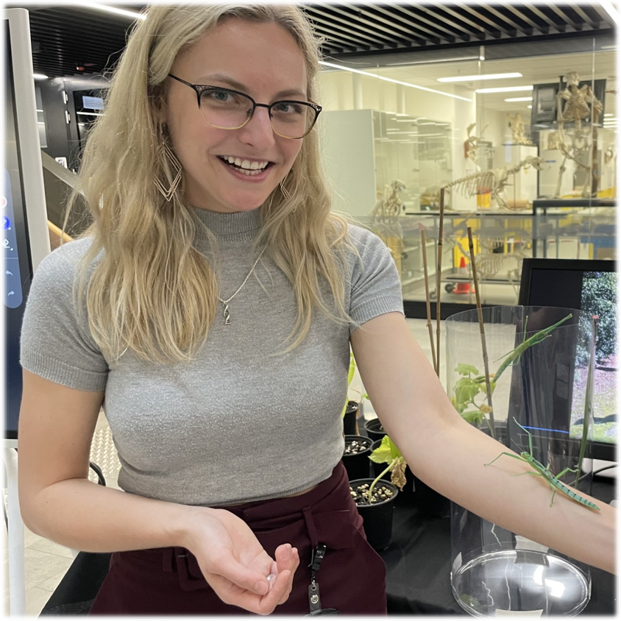The American Naturalist 2025 Student Paper Award is for work that was published in 2024 and that was performed primarily by the first author and primarily while she or he was an undergraduate or graduate student. The Editors of the journal, in consultation with Associate Editors, examine all student-authored papers in the journal to select an outstanding contribution that advances the journal’s goals of changing the way people think about organismal biology (including but not limited to ecology, evolution, and behavior) by providing new conceptual insights.
2025 American Naturalist Student Paper Award
Posted on

Winner:
Soleille M. Miller, Katarina C. Stuart, Nathan W. Burke, Lee A. Rollins, and Russell Bonduriansky. 2024. “Genetic and Phenotypic Consequences of Local Transitions between Sexual and Parthenogenetic Reproduction in the Wild” The American Naturalist 203:73–91.
In their paper, Soleille Miller and colleagues tackle a classic yet understudied question: How do asexual lineages persist? To answer this question, they focused on a seemingly perfect model system: the facultatively parthenogenetic Australian stick insect Magacrania batesii. Their ambitious study combined four years of extensive field surveys, uncovering a striking geographic mosaic of mixed-sex and all-female populations along the Australian coast. Genetic analyses revealed multiple independent transitions between reproductive modes. While all-female populations exhibited significantly lower allelic diversity, comprehensive phenotypic assessments found no obvious deleterious fitness consequences. These findings offer important insights into the origins and early evolution of asexual reproduction. The American Naturalist editors were particularly impressed by the study’s rigorous multi-year data collection and its integration of phenotypic and genetic data. This research exemplifies how studying natural ecosystems can illuminate key evolutionary concepts and rigorously test theoretical predictions and their underlying assumptions.

Honorable mention:
Mattias Siljestam & Ivain Martinossi-Allibert. 2024. “Anisogamy does not always promote the evolution of mating competition traits in males.” The American Naturalist 203:230–253.
Honorable mention goes to Mattias Siljestam for the paper “Anisogamy does not always promote the evolution of mating competition traits in males.” A classic view is that anisogamy causes males to experience stronger selective pressures to invest in mating competition traits. But is this a general pattern? In this paper, Siljestam & Martinossi-Allibert present a mechanistic model of gamete competition based on collision theory and fluid mechanics. They use this model to explore the coevolution of gamete size with a mating competition trait in sessile marine broadcast spawners, where the transition from isogamy to anisogamy is thought to have first evolved. They show that, while at high gamete density the evolution of anisogamy always results in male-biased investment in competition, either female- or male-biased competition can evolve at intermediate gamete densities. These results challenge the classic view and highlight the importance of a detailed appreciation of the ecological and evolutionary consequences of different modes of competition between gametes. This original paper is a great example of how we can use theory to shed light on fundamental biological questions which are not always amenable to experimental manipulation.